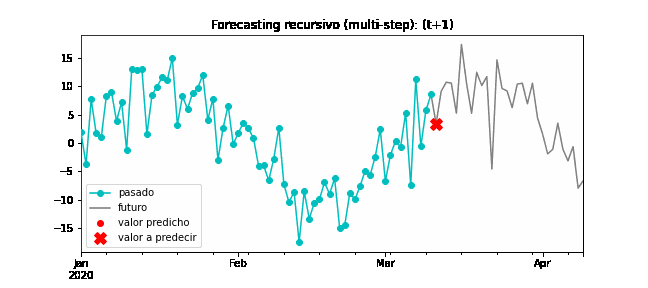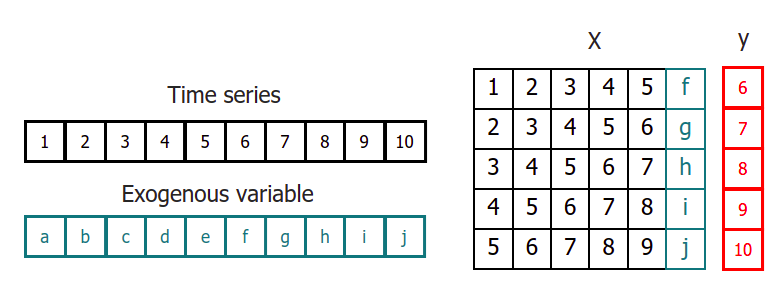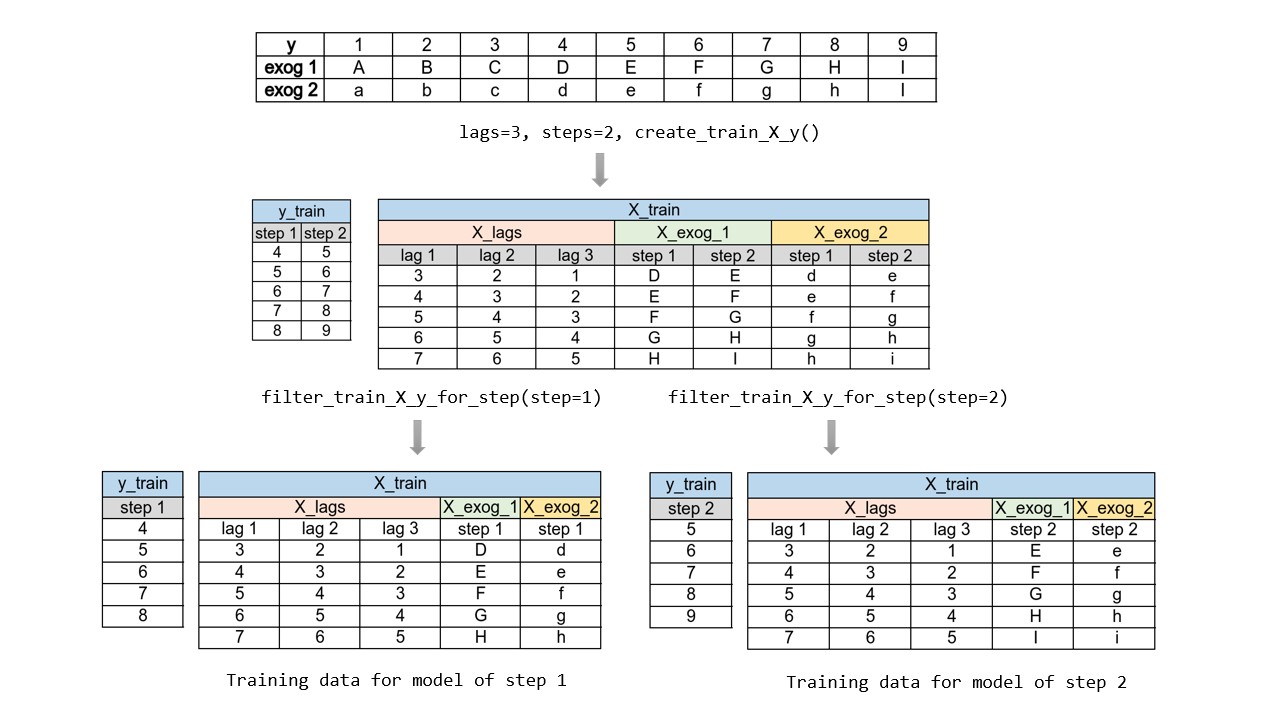Introduction to forcasting¶
Time Series and forecasting¶
A time series is a sequence of data arranged chronologically, in principle, equally spaced in time. Time series forecasting is the use of models to predict future values based on previously observed values, with the option of also including other external variables.
When working with time series, it is seldom needed to predict only the next element in the series (t+1). Instead, the most common goal is to predict a whole future interval (t+1, ..., t+n) or a far point in time (t+n). There are several strategies that allow generating this type of multiple predictions.
Recursive multi-step forecasting¶
Since the value of t(n) is required to predict the point t(n-1), and t(n-1) is unknown, it is necessary to make recursive predictions in which, each new prediction, is based on the previous one. This process is known as recursive forecasting or recursive multi-step forecasting.

The main challenge when using scikit-learn models for recursive multi-step forecasting is transforming the time series in an matrix where, each value of the series, is related to the time window (lags) that precedes it. This forecasting strategy can be easily generated with the classes ForecasterAutoreg and ForecasterAutoregCustom.


Direct multi-step forecasting¶
This strategy consists of training a different model for each step. For example, to predict the next 5 values of a time series, 5 different models are trainded, one for each step. As a result, the predictions are independent of each other. This forecasting strategy can be easily generated with the ForecasterAutoregMultiOutput class (changed in version 0.1.9).
